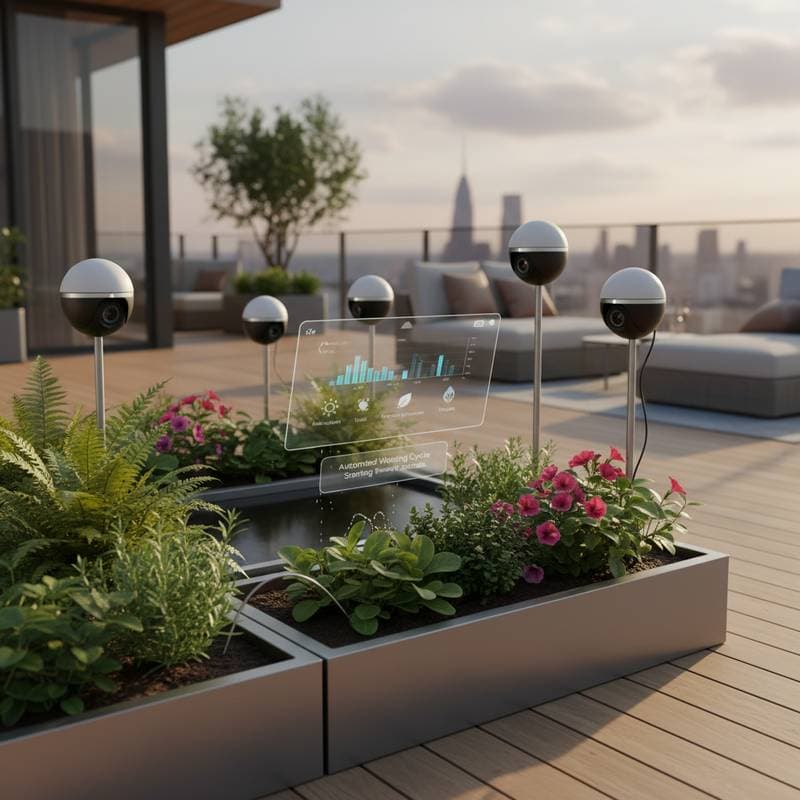Lightweight Pergola Pods: Effortless Shade for Compact Decks
Small decks often become uncomfortably hot under direct sunlight, limiting their use for relaxation. Individuals seek ways to enjoy fresh air without excessive heat. A pergola pod addresses this issue efficiently. This compact, modular structure provides adjustable shade while maintaining an open feel. Installation requires less than a weekend, transforming the space into a comfortable retreat.
The primary objective involves delivering adaptable shade within a constrained area. This article explains the nature of a pergola pod, required tools, safe installation procedures, and ongoing care routines.
Understanding Pergola Pods
A pergola pod consists of a compact, retractable framework constructed from aluminum or pressure-treated wood posts topped with a fabric canopy. The canopy mechanism allows sliding or folding to regulate sunlight exposure. In contrast to larger pergolas, a pod spans 6 to 10 feet in width, making it suitable for modest decks. Its modular construction supports future additions such as privacy screens or side panels.
This design proves ideal for decks unable to bear the load of a fixed roof. It offers a detachable alternative for renters or condominium residents, combining a polished appearance with versatility. The lightweight materials reduce structural demands, ensuring compatibility with various deck types.
Essential Tools and Materials
Preparation involves gathering basic tools to streamline the process. Organize these items nearby to avoid interruptions.
Tools
- Cordless drill equipped with appropriate bits
- Spirit level and retractable measuring tape
- Six-foot step ladder
- Rubber mallet for gentle adjustments
- Adjustable wrench for secure fittings
Materials
- Complete pergola pod kit including canopy
- Four anchor plates or compatible deck brackets
- Stainless steel screws measuring at least two inches in length
- Weather-resistant sealant for drilled holes
- Rope or bungee cords designated for wind securement
Select materials resistant to corrosion, particularly in humid or coastal environments, to prolong durability.
Installation Steps
Follow these sequential steps to achieve a stable and functional setup. Allocate time for each phase to maintain precision.
- Assess and measure the deck space. Ensure at least one foot of clearance from adjacent walls or railings to facilitate airflow and access.
- Outline post positions. Apply chalk lines or painter's tape to designate each corner accurately, verifying measurements twice.
- Create pilot holes. Drill these to avert wood splitting, especially on softer deck surfaces; always wear protective eyewear during this operation.
- Secure anchor plates. Fasten them firmly without excessive force to avoid damaging the deck.
- Position posts and verify alignment. Employ the level on multiple sides to confirm the frame remains square and plumb.
- Install crossbeams or canopy tracks. Enlist assistance for beams exceeding six feet to ensure safe handling and proper placement.
- Mount the canopy. Guide it onto the tracks and perform initial retraction tests to confirm smooth operation.
- Reinforce perimeter stability. Attach ropes or bungee cords at corners, particularly in regions prone to gusty winds.
Most installations complete within four hours for a single individual, assuming a small pod size. Pause periodically to double-check alignments.
Key Safety Considerations
Conduct all work on a dry, firm deck surface to minimize slip hazards. Limit ladder use to the first three rungs for stability. Prior to drilling, evaluate the deck's load-bearing capacity through visual inspection or professional assessment. For composite decking, opt for specialized screws to prevent material fractures and ensure long-term integrity.
Additionally, secure loose tools to avoid accidents, and work with a partner during overhead tasks. These precautions safeguard both the installer and the structure.
Common Issues and Solutions
Should the canopy resist retraction, lubricate the tracks with a mild soapy solution applied via soft brush, then rinse thoroughly. A wobbling frame indicates misalignment; re-level the base and torque bolts uniformly across all connections.
Water accumulation on the canopy requires slight elevation of one side by one inch to promote drainage. Rust on metal posts demands light sanding followed by application of rust-inhibiting paint or sealant. Address these promptly to prevent escalation.
Cost Estimates and Timeline
Entry-level aluminum pergola pod kits range from 250 to 500 dollars, depending on size and features. Premium options with enhanced fabrics or motorized retraction may exceed 800 dollars. A solo installation spans half a day, reducing to two hours with assistance.
Budget allocation primarily covers the canopy fabric and hardware; prioritize UV-protective materials to resist color degradation from sun exposure. Factor in minor additional costs for sealants and tools if not already owned.
Seasonal Maintenance Practices
Remove debris such as leaves weekly using a soft broom to prevent buildup. Perform monthly cleanings of the canopy with a gentle water-detergent mixture, avoiding harsh chemicals that could degrade fabrics.
Apply silicone-based lubricant to sliding mechanisms biannually for fluid operation. Conduct comprehensive inspections of bolts and tie-downs during spring and fall preparations. For severe weather, relocate detachable fabrics indoors to shield against damage, while aluminum frames withstand outdoor exposure when properly sealed.
Efficient Storage Strategies
Organize canopy components and fasteners in a clearly labeled plastic container, incorporating spares like additional screws and a compact wrench alongside the original manual. Suspend tie-down ropes from a convenient hook adjacent to the deck entrance.
In available space, house the folded canopy within a 24-inch waterproof storage bin positioned beneath a bench. These organized approaches minimize search time and support seamless seasonal transitions.
Professional Assistance Indicators
Consult a carpenter for decks with aged framing to verify structural support prior to any modifications. Engage an electrician for integrating lighting fixtures to comply with safety codes.
In areas with frequent winds surpassing 25 miles per hour, professionals can reinforce anchors with heavy-duty hardware designed for high-velocity conditions. Such expertise ensures compliance and longevity.
Achieving Lasting Deck Enhancement
Implementing a pergola pod elevates a basic deck into a shaded sanctuary through straightforward installation. Precise measurement, secure mounting, and consistent upkeep form the foundation of success. With these elements in place, enjoy a functional outdoor extension that adapts to seasonal needs.


